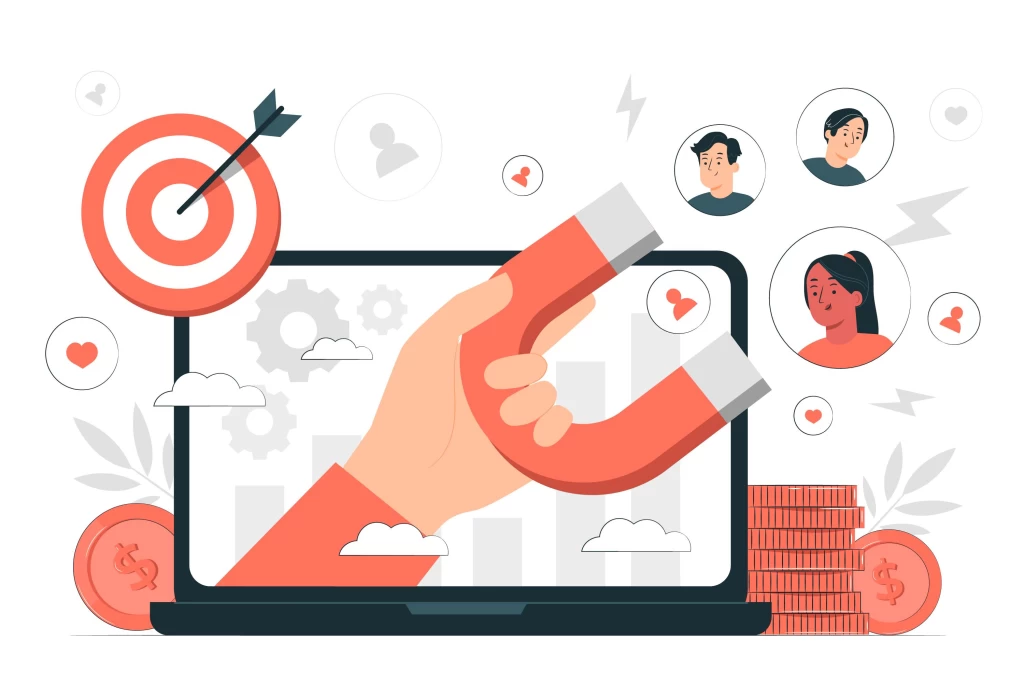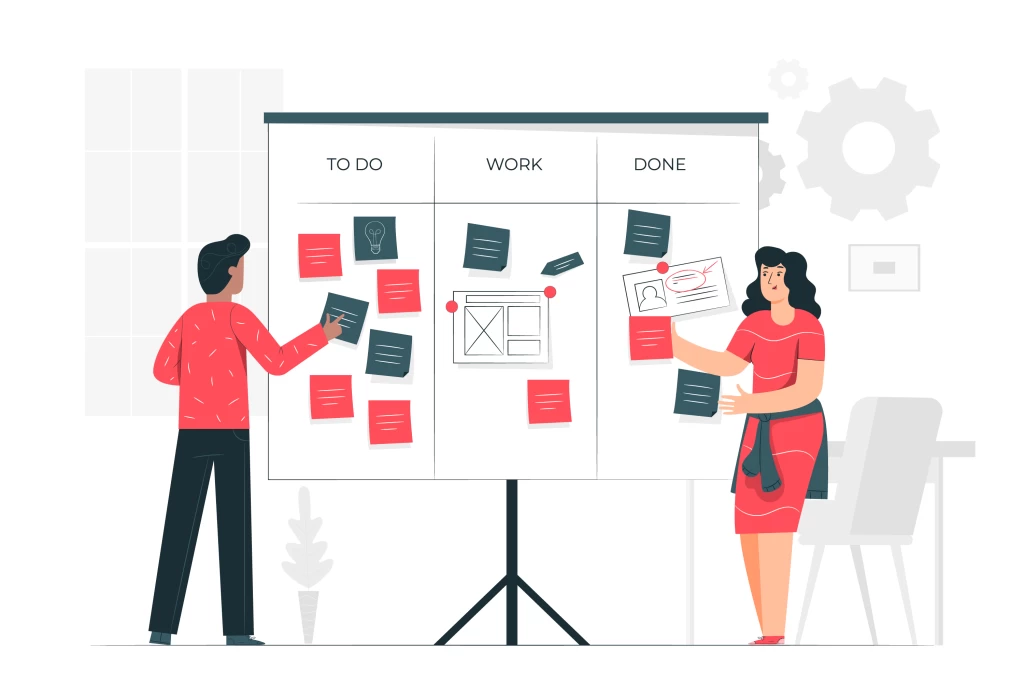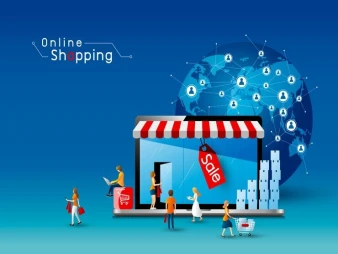Free support 24/7
Free support 24/7

E-marketing is the process of using the internet and social media to promote your products, services or brand. It is an effective and cost-effective way to increase awareness, loyalty and sales. But how do you get started in e-marketing? What are the most important strategies that you need to follow? In this article, we will review five key e-marketing strategies that will help your business succeed.

1- Determine your target audience
The first step in any marketing plan is to identify your target audience, the people you want to attract and persuade to buy your products or services. To do this, you must do market research to know the profiles, behaviour, needs and pains of your audience. You can use tools like Google Analytics, Facebook Insights, or Instagram Insights to collect data about your audience, such as age, gender, location, interests, devices, visits, and engagement. You can also conduct surveys, interviews, or focus groups to get your audience's opinion of your products, services, or brand.
After collecting the data, you should create a buyer persona, i.e. an ideal model of an ideal customer that represents your target audience. The buyer persona contains a name, image, background, goals, challenges, incentives and obstacles for a specific customer. This helps you better understand your audience, engage with them personally, and create customized marketing messages for them.
2- Choosing the appropriate electronic marketing channels
After defining your target audience, you must choose the channels that you will use to reach and interact with them. There are many channels available for e-marketing, such as:
Website: It is your main destination on the Internet, where you display your products, services or brand in a professional and attractive way. Your site should be easy to use, fast to load, responsive on all devices, SEO optimized, connected and convertible.
Social Media: Platforms that allow you to create and share engaging, useful, and interesting content with your audience, such as Facebook, Instagram, Twitter, LinkedIn, YouTube, and others. You must choose the platforms that best suit your business and your target audience, maintain an active and regular presence, listen to your audience's feedback, and engage in conversations with them.
Email: An old but effective marketing channel that allows you to send messages directly to your audience's email. You should build a mailing list of people who agree to receive your messages, and provide them with added value in each message, such as tips, offers, news or success stories. You should also check the performance of your messages in terms of open rate, compression, bounce, and cancellation.
Content: It is the main material of any marketing strategy, providing your audience with valuable, unique and relevant information to their needs. Your content should be of high quality, great originality and appropriate length, whether it is text, image, video, audio, graphic or otherwise. You should also use relevant keywords to search for your products or services, to increase the chances of your content appearing in search engine results.

3- Create an e-marketing plan
After choosing the appropriate e-marketing channels, you must create an e-marketing plan, i.e. a map that shows your goals, strategies, tactics, budget and metrics for e-marketing. The electronic marketing plan helps you to organize, implement and evaluate electronic marketing campaigns in a systematic and coordinated manner. To create an e-marketing plan, you must follow these steps:
Determine your goals: You must define what you want to achieve through e-marketing, such as increasing visitors, customers, revenue, or fame. Your goals should be SMART, i.e. specific, measurable, realistic, relevant and time-bound.
Choosing Your Strategies: You must choose the strategies you will use to achieve your goals, such as content marketing, social media marketing, email marketing, or search engine marketing. You need to take into account the chosen marketing channels, your target audience and the benefits of your business.
Define your tactics: You should define the detailed tactics you will implement to implement your strategies, such as creating interesting content, running paid advertising campaigns, sending periodic emails, or using specific keywords. You must keep in mind available sources, best practices, and innovation.
Determine your budget: You must determine how much you will spend on each channel, strategy or tactic of your digital marketing plan. You should keep in mind expected return on investment (ROI) and planned and unplanned expenses.
Determine your metrics: You must determine how you will measure the success of your e-marketing plan, through the use of measurable indicators, such as the number of visitors, shares, subscribers or sales. You must keep in mind the purpose of each channel, strategy or tactic, and use reliable analytical tools.

4- Implementation of the electronic marketing plan
After creating an e-marketing plan, you must implement it accurately and systematically. To implement the e-marketing plan, you must follow the following steps:
Distribution of tasks: You must determine who will perform any of the tasks of the e-marketing plan, whether it is your internal team, external partners or service providers. You must establish responsibilities, authorities, and deadlines for each task, and monitor progress and quality regularly.
Launching Campaigns: You must launch your planned e-marketing campaigns, whether organic or paid, on the selected channels. You must ensure that your campaigns adhere to the messages, goals, and audience identified in the digital marketing plan, and use attractive and action-inducing elements, such as titles, images, videos, and links.
Content Posting: You must create and publish content tailored to your target audience, on your website, social media, and email. ought to
Your content should be of high value, great originality, appropriate length, and use relevant keywords to search for your products or services. You should also consider the frequency, timing, and format for posting your content.

5- Evaluation of the e-marketing plan
After implementing the e-marketing plan, you must evaluate it periodically and continuously. To evaluate an e-marketing plan, you must follow these steps:
Data collection: You should collect data on the performance of your e-marketing plan, through the use of analytics tools such as Google Analytics, Facebook Insights, Instagram Insights or Mailchimp. You should monitor the indicators specified in the e-marketing plan, such as the number of visitors, shares, subscribers or sales.
Data analysis: You must analyze the performance data of the e-marketing plan and compare it with the objectives set in the e-marketing plan. You must determine which channels, strategies or tactics have produced good results and which have produced poor results. It should also determine what are the opportunities, challenges and threats facing the e-marketing plan.
Modifying the plan: You must modify the e-marketing plan based on the results of the analysis, and increase, decrease or change the channels, strategies or tactics used. You must take into account the satisfaction and desires of your target audience, and use the latest technologies and innovations in the field of e-marketing.
6- Paid advertising strategy
It is a marketing strategy that relies on paying a certain amount of money to obtain advertising space on the Internet, whether on search engines, social media, or other websites. This strategy allows you to reach a large, targeted audience quickly and effectively, increasing traffic and conversions on your site. Some of the most popular types of paid advertising are:
Google Ads: It is a service provided by Google to advertisers, allowing them to create and manage advertising campaigns on the Google Network, which includes search engine, maps, email, video, and others. Advertisers can choose keywords related to their products or services, and pay a set amount for each click that a user makes on their ad.
Facebook Ads: It is a service provided by Facebook to advertisers, allowing them to create and manage advertising campaigns on the Facebook network, which includes the Facebook platform itself, Instagram, WhatsApp, and others. Advertisers can choose a target audience based on criteria such as age, gender, location, and interests, and pay a set amount for each impression, click, or conversion that gets their ad.
Native Ads: It is a type of advertisement that matches the look and feel of the surrounding content, so that it appears as a part of it and does not disturb the user. These ads can appear in the form of articles, videos, images or graphics, on news, entertainment or educational websites. This type of advertising aims to provide value to the audience and increase trust and loyalty.
7- Influencer marketing strategy
It is a marketing strategy based on cooperation with influencers, that is, people who have popularity, credibility, and influence on a specific audience on social media. This strategy allows you to take advantage of the follower base and the trust of influencers, and reach a new audience interested in your products or services. Some of the ways influencers can help you with your marketing are:
Present your products or services to their audience directly or indirectly, such as offering them their use, experience, or opinion of your products or services.
Generate engaging, useful, and interesting content about your products or services, such as writing articles, recording videos, podcasts, or photos about your products or services.
Encourage their audience to visit your site, follow your accounts, subscribe to your mailing list, or participate in contests or promotions you offer.

8- Content marketing strategy
It is a marketing strategy that relies on creating and publishing valuable and unique content that is relevant to the needs and pains of your target audience. This strategy helps you attract, retain, and satisfy your audience, and increase trust, loyalty, and authority in your business. Some of the types of content that can be created and published are:
Articles: Written texts that cover a specific topic of interest to your audience, such as news, advice, tips, or opinions. Articles should be of high quality, great originality, appropriate length, and use keywords relevant to the search for your products or services.
Videos: Videos that show visual and audio content that will grab your audience's attention, such as tutorials, presentations, or success stories. Videos should be of high quality, creative, and timely, and use attractive and action-motivating elements such as titles, photos, music, and invitations.
Images: Visual content that displays graphics, designs, or depictions of specific content, such as statistics, testimonials, or products. Images must be of high quality, aesthetically pleasing, appropriate size, and use colors, fonts, and logos that match your business identity.
Podcast: Audio content featuring conversations, interviews, or discussions about topics of interest to your audience, such as ideas, experiences, or trends. The podcast must be of high quality, great interaction and appropriate duration, and use clear voice and appropriate sound effects.
9- Mobile marketing strategy
It is a marketing strategy based on using the mobile phone as a channel to communicate and interact with your target audience. This strategy helps you to take advantage of the spread, popularity and effectiveness of the mobile phone in users' lives. Some of the ways that a mobile phone can help you with your marketing are:
Mobile applications: They are programs that run on a mobile phone, providing specific services or benefits to users, such as shopping, entertainment, or education. You can create an app for your business that makes it easier for your audience to access your products or services, and increase engagement and loyalty.
anchored
Mobile Phone: These are short text messages sent to a mobile phone, containing information, offers or invitations to users. You can send messages to your target audience, reminding them of the news, discounts or competitions you offer, and increase attraction and motivation.
Notification messages: These are messages that appear on the mobile phone screen, containing signals or alerts to users. You can send notification messages to your target audience, letting them know about updates, tips or lessons you offer, increasing their interest and curiosity.
10- Marketing strategy through electronic seminars
It is a marketing strategy that relies on holding online seminars, workshops, or lectures that provide educational, informative, or entertaining content to your target audience. This strategy helps you demonstrate your expertise and skill in your field of business, increasing trust, authority, and value in the eyes of your audience. Some of the steps to follow to run a successful webinar are:
Choosing a topic: You must choose a topic that interests your target audience, and solves a problem or fulfills a need for them. The topic should be specific, clear, and attractive, and use relevant keywords for searches for your products or services.
Choosing a platform: You must choose a platform that allows you to conduct a webinar with ease and quality, and provides you with the necessary features, such as registration, broadcasting, interaction and evaluation. Some popular platforms for hosting webinars are: Zoom, Webex, GoToWebinar, and YouTube Live.
Choosing a date: You must choose a suitable date for holding your webinar, so that it is comfortable for your target audience in terms of time and place. You should take into account factors such as timing, holidays, and events, and determine an appropriate length for your seminar, usually between 30 and 60 minutes.
Promote the webinar: You must promote your webinar effectively, reaching a large and targeted audience, and increase the number of registrants and attendance. You can use different marketing channels, such as email, social media, content or influencers, to advertise your webinar and entice your audience with the benefit you will get from attending it.
Presenting the webinar: You must present your webinar in a professional, interesting and useful manner, in order to arouse the interest and admiration of your audience, and achieve your marketing goals. You should use clear and engaging visual presentation, use clear and impactful voice, and use questions, activities and examples to increase interaction and understanding.
These were 10 strategies that you can use in order to start an effective and successful marketing process that will help you grow your business and reach globalization

Flash sales are not just a temporary marketing tool. They are a smart tool to quickly drive sales and increase engagement in your store

تعرف على الطريقة الذكية اللي تخليك تستفيد من تجارب عملاءك السابقين في تسويق منتجاتك الجديدة وزيادة المبيعات
You can create your store easily